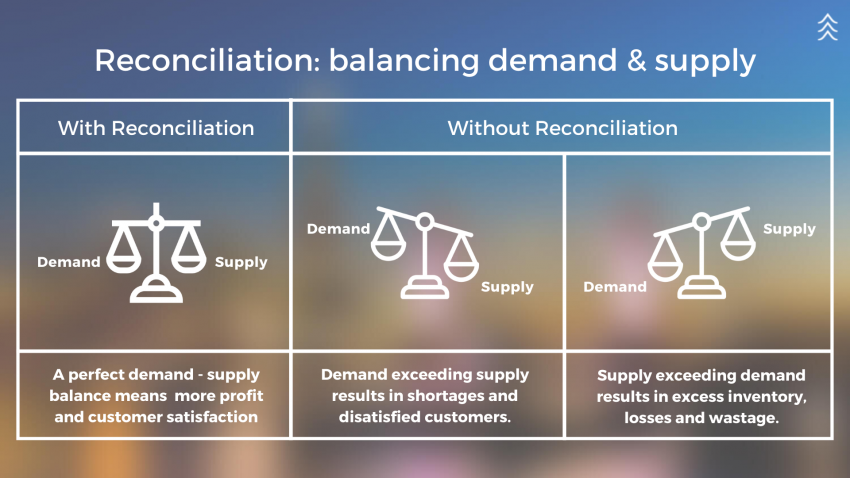Sales and Operations Planning (S&OP) is a methodology that provides a framework for organisations to regularly plan and review their demand, supply and inventory levels. It helps to improve productivity and customer satisfaction.
Meaning of reconciliation
The word ‘reconciliation’ literally means ‘the process of making consistence or compatible’. In accounting, it means comparing two accounts or sets of data to find and explain any differences in them. In S&OP, it means balancing the demand and supply plans with each other.
Reconciliation in S&OP
S&OP includes financial reconciliation to identify gaps and imbalances in the supply and demand plans. It is a part of ‘Pre-S&OP’ and enables the leadership team to achieve a balance between demand and production. Once the demand and supply plans are reconciled, they are communicated for executive review to be finalised and approved for these plans to be proficiently executed by the operations team.
Reconciliation in Integrated Business Planning (IBP) – Integrated Reconciliation
IBP is a more comprehensive process; hence, the reconciliation is also more evolved. Integrated reconciliation is one of the things that makes IBP more proficient than S&OP. It is not limited to demand-supply balancing; rather, it is an ongoing process. It includes long term objectives such as, new activities, capacity building, and identifying (and finding alternatives to close) the gaps between planned & actual performance etc.
Why do we need a reconciliation?
Matching production with demand is necessary to avoid excess stocks and a shortage of products in the market. This also reduces the cost of inventory management. Accurate forecasts aid an organisation to make better decisions for procurement, production, logistics and sales & marketing. Incorporating the information about outcomes (planned vs actual performance) and learnings from the previous plans into the new plan helps in achieving performance excellence.
Conclusion
Demand-supply balancing is an ongoing challenge and it needs to be done to minimise business losses. A standard S&OP process incorporates the latest forecast that helps in making plans for inventory, production, new product launch, sales and finance. Accuracy of forecasts is vital because incorrect forecasts may result in excess inventory. It brings huge benefits in terms of reducing inventory cost, higher productivity, and greater customer satisfaction.
